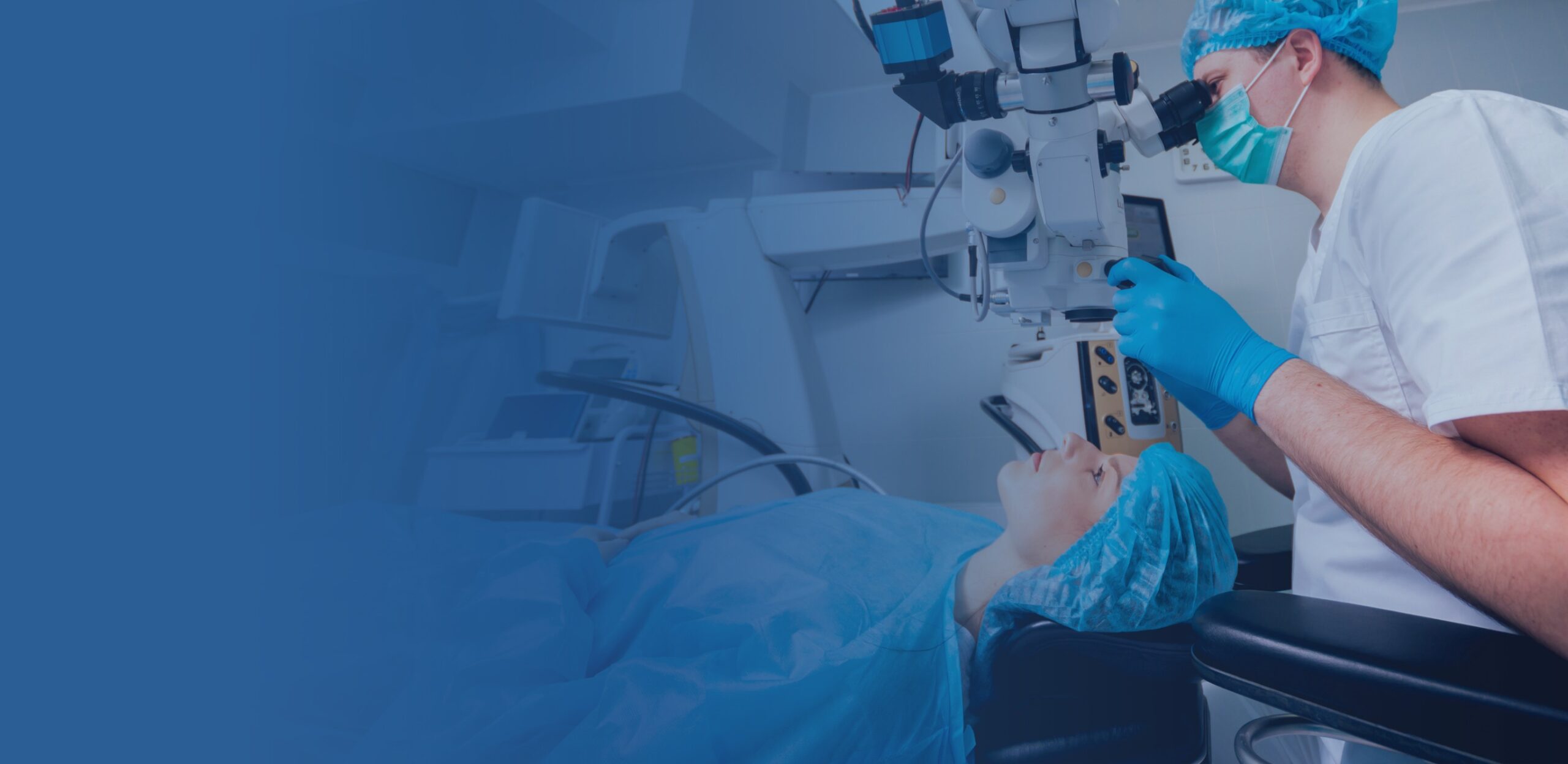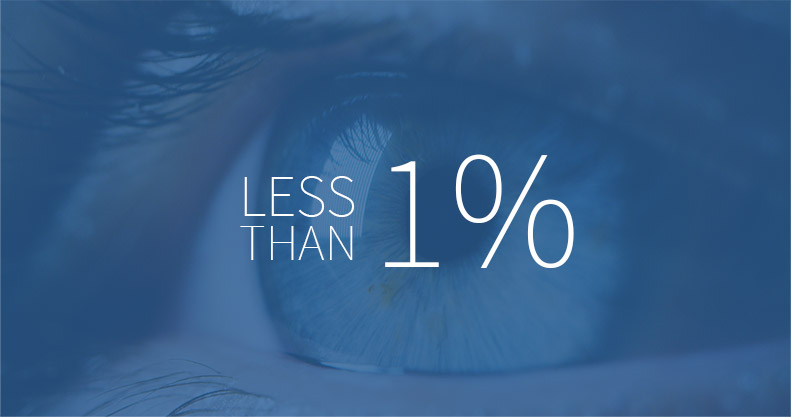Last Updated:
- What is LASIK?
- What Can LASIK Treat?
- Who is a Candidate for LASIK?
- Meet Our LASIK Surgeons
- LASIK Technology
- Preparing for LASIK Vision Correction Surgery
- LASIK Eye Surgery: What to Expect
- Recovery After LASIK
- Frequently Asked Questions About LASIK
What is LASIK?
LASIK (laser-assisted in situ keratomileusis) is advanced laser eye surgery that uses lasers to reshape the cornea to improve a patient’s vision. According to the American Refractive Surgery Council, more than 90% of people who undergo LASIK eye surgery achieve vision that is 20/20 or better.1

What can LASIK treat?
LASIK laser eye surgery can help patients reduce dependence on eyeglasses or contact lenses by correcting common refractive errors, including:
- Nearsightedness (myopia)
- Farsightedness (hyperopia)
- Astigmatism
Nearsightedness (myopia)
Farsightedness (hyperopia)
Astigmatism
Who is a Candidate for LASIK?
To determine whether you are a good candidate for LASIK, your eye surgeon will conduct a thorough examination. A good candidate for LASIK:
- Is at least 18 years of age
- Has a stable refractive error (no eye prescription change in the last year)
- Has a refractive error that is treatable with LASIK
- Has healthy corneas and good overall eye health2
Patients who are pregnant or breastfeeding should also wait to have LASIK surgery.
Meet Our LASIK Surgeons







LASIK Technology
At Cincinnati Eye Institute we are committed to remaining at the forefront of ophthalmologic technology in order to provide our patients with the best results and most comfortable experience possible.
We employ the state-of-the-art IntraLase® femtosecond laser during most LASIK procedures, allowing us to perform the entire procedure blade-free using the latest laser technology. We also use the Advanced CustomVue excimer laser in order to provide patients with high-definition, high-accuracy laser vision correction.
Preparing for LASIK Vision Correction Surgery
The first step in preparing for LASIK laser eye surgery is to undergo a thorough eye examination by one of the experienced doctors at Cincinnati Eye Institute. Your procedure will be scheduled once you are pronounced a good candidate for laser vision correction.
Contact lenses can change the shape of the cornea, so patients who wear contacts will be asked to switch to glasses for at least one week before LASIK surgery.
On the day of your LASIK procedure, you should not apply any creams, lotions, or makeup to your face. You’ll also need to make arrangements for a ride home after your procedure. While the LASIK procedure often takes less than 15 minutes, you can expect your visit to our office to last about 90 minutes.

LASIK Vision Correction Surgery: What to Expect
LASIK vision correction surgery is painless and completed within a matter of minutes. Before the procedure, your eye doctor will numb your eyes with anesthetic eye drops and a special device will be used to hold your eyes open.
To begin the procedure, the eye surgeon will use an IntraLase laser (iLASIK) to create a flap in the cornea. Next, an excimer laser will be used to gently reshape the cornea before the flap is put back into place. This flap will heal naturally: there are no sutures required for LASIK eye surgery.
Once your LASIK laser vision correction surgery is completed, you will be fitted with a protective eye shield and spend a short time recovering in our office before you can be driven home to relax and recover.3
Recovery After LASIK
Following your LASIK procedure, you can expect your vision to be significantly improved within 24 hours. Most patients experience minimal discomfort after their LASIK procedure, and are able to return to their normal daily routines (including driving) the day after LASIK surgery.
For the first few days to weeks after your LASIK procedure, you may experience an increased sensitivity to bright light, and you may notice halos around lights when it is dark. Your eyes may also feel dry for the first few days, and this can be treated with over-the-counter eye drops.
To ensure that your eyes are healing properly and that your vision is as clear as possible, we will schedule a follow-up appointment with your ophthalmologist shortly after your vision correction procedure.
Frequently Asked Questions About LASIK
What are the risks of LASIK?
According to the American Refractive Surgery Council, fewer than 1% of LASIK patients experience complications.4
LASIK vision correction surgery has a high safety profile and excellent patient satisfaction rates. Still, any surgical procedure is associated with certain risks and complications. Complications and side effects of LASIK eye surgery, while rare, and may include:
- Increased sensitivity to light
- Dry eyes
- Inflammation of the cornea
- Halos around lights
Most of these LASIK side effects are temporary and typically resolve as a patient recovers.

According to the American Refractive Surgery Council, fewer than 1% of LASIK patients experience complications.4
What is bladeless or all-laser LASIK?
Traditionally, the flap created in a patient’s cornea for LASIK was made with a surgical blade called a microkeratome. Thanks to the advanced technology we use at Cincinnati Eye Institute, our surgeons perform blade-free, all-laser LASIK. Our surgeons use the IntraLase® femtosecond laser to create the corneal flap, then the Advanced CustomVue excimer laser for reshaping the corneal tissue to improve refractive errors.
All-laser LASIK allows us to fully customize patients’ LASIK surgery with a higher degree of accuracy and precision, leading to enhanced refractive outcomes.
Does LASIK hurt
Anesthetic eye drops are applied before LASIK surgery begins, and patients typically report no pain during the procedure. You might feel a sensation of pressure or experience dimming of your vision at the point in the procedure where the corneal flap is created.
What is the patient satisfaction rate for LASIK?
LASIK eye surgery has the highest patient satisfaction rate of any elective eye procedure, with more than 96% of patients reporting they are happy with the outcome.5
What is recovery like after LASIK?
Recovery after LASIK refractive surgery is typically brief and very little downtime is needed.
One of the best things about LASIK refractive surgery is the fast results: you should notice the full extent of your vision correction within a week!
When can I drive after LASIK?
Patients are required to receive a ride home immediately after their LASIK vision correction surgery. While you may experience blurred vision for a few days following your procedure, some patients experience vision clear enough to feel comfortable driving the day after surgery.
How long will I need to be off work after LASIK?
Most patients return to work one to two days after their LASIK procedure.
Is it possible to correct vision in both eyes during one appointment?
Yes. Most patients prefer to undergo LASIK eye surgery on both eyes at the same time in order to reduce their downtime and time away from work.
Contact CEI for Laser Vision Correction in Cincinnati and Edgewood
If you are ready to see life more clearly without glasses or contacts, you could be a good candidate for LASIK vision correction surgery at Cincinnati Eye Institute. To learn more about LASIK eye surgery and whether you are a good candidate, please contact us to schedule a consultation.
1 American Refractive Surgery Council. What is the LASIK Success Rate? Available: https://americanrefractivesurgerycouncil.org/laser-eye-surgery-lasik-success-rate/. Accessed October 1, 2020.
2 American Academy of Ophthalmology. Lasik. Available: https://www.aao.org/eye-health/treatments/lasik. Accessed December 8, 2022.
3 FDA. Lasik: what should I expect before, during, and after surgery? Available: https://www.fda.gov/medical-devices/lasik/what-should-i-expect-during-and-after-surgery. Accessed October 1, 2020.
4 American Refractive Surgery Council. LASIK Complication Rate: The Latest Facts and Stats You Should Know. Available: https://americanrefractivesurgerycouncil.org/lasik-complication-rate-latest-facts. Accessed October 1, 2020.
5 Sandoval HP, Donnenfeld ED, Kohnen T, Lindstrom RL, Potvin R, Tremblay DM, Solomon KD. Modern laser in situ keratomileusis outcomes. J Cataract Refract Surg. 2016 Aug;42(8):1224-34. doi: 10.1016/j.jcrs.2016.07.012. PMID: 27531300. Available: https://pubmed.ncbi.nlm.nih.gov/27531300. Accessed October 1, 2020.
